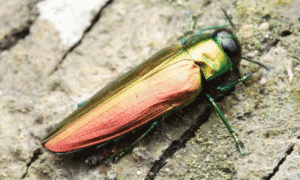Elms to ashes – and a few beetles, too
 As I’m a (job board) doctor, I thought it was time for a quick biology lesson – and don’t fret, it does indeed have something to do with our industry!
As I’m a (job board) doctor, I thought it was time for a quick biology lesson – and don’t fret, it does indeed have something to do with our industry!
Here in the midwestern states of the U.S., elms were once the dominant tree in most towns and cities. They did well in the temperate climate (as they did in Europe) – at least until 1928, when Dutch elm disease came to North America, courtesy of a shipment of infected logs from the Netherlands. By 1989, about 75% of the continent’s 77 million elms were gone.
What did those towns and cities do? After all, people still wanted trees. So municipalities replanted – often using ash trees. These were already plentiful – and popular. Soon, where there had once been elm trees, there were now millions of ash trees. But in the early 2000s, ash trees began to die. The cause? The emerald ash borer, a beetle from Asia that seemed to do very well in North America. It’s estimated that the beetle may kill most of the 7 billion ash trees in North America in the coming years. (In fact, my own street has become lined with dead and dying ash trees over the past 2 years).
So what does this have to do with job boards? Well, in each case mentioned above, a dominant (and arguably over-planted) tree was attacked by an ‘outsider’ who quickly took advantage of the situation to ‘thrive’. Thus, think of how the original job boards attacked newspapers. Instead of thinking a response through in a holistic way, people responded by planting a lot of the same kind of another tree – which were again attacked. Kind of like how the many job boards that sprang up in the wake of the initial sites were ‘attacked’ in the mid-2000s by newcomers such as LinkedIn and Indeed. (Yes, I know – it’s not a perfect analogy – but I’m not a real doctor, either!).
Let’s go back to those towns and cities for a second. How are they handling this second wave of tree destruction? Much more intelligently, thank you – instead of rushing to plant millions of the same types of trees, they are instead planting many different types of trees, including a healthy number of resilient native species. When a new pest arrives, it may kill some of the trees – but not all of them.
And – you may ask – how are the successful job boards out there handling their own new wave of destruction? By using multiple models to answer their clients’ recruiting needs – instead of one-size-fits-all. You can call it holistic thinking, or respond to customer needs, or simple evolution – but avoiding a cookie-cutter approach, these companies are surviving even as the next round of ‘job board killers’ come crashing into the market.
All right – enough biology. Elms to ashes, dust to dust. Class dismissed!
PS: Want to get your biology lesson in person? Look me up at the Jobg8 Summit on June 25-26 in Denver!
[Want to get Job Board Doctor posts via email? Subscribe here.]. [Check out the JobBoardGeek podcast archive!]
Comments (0)